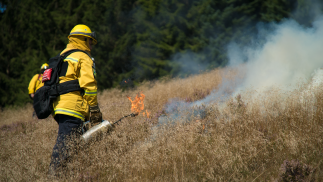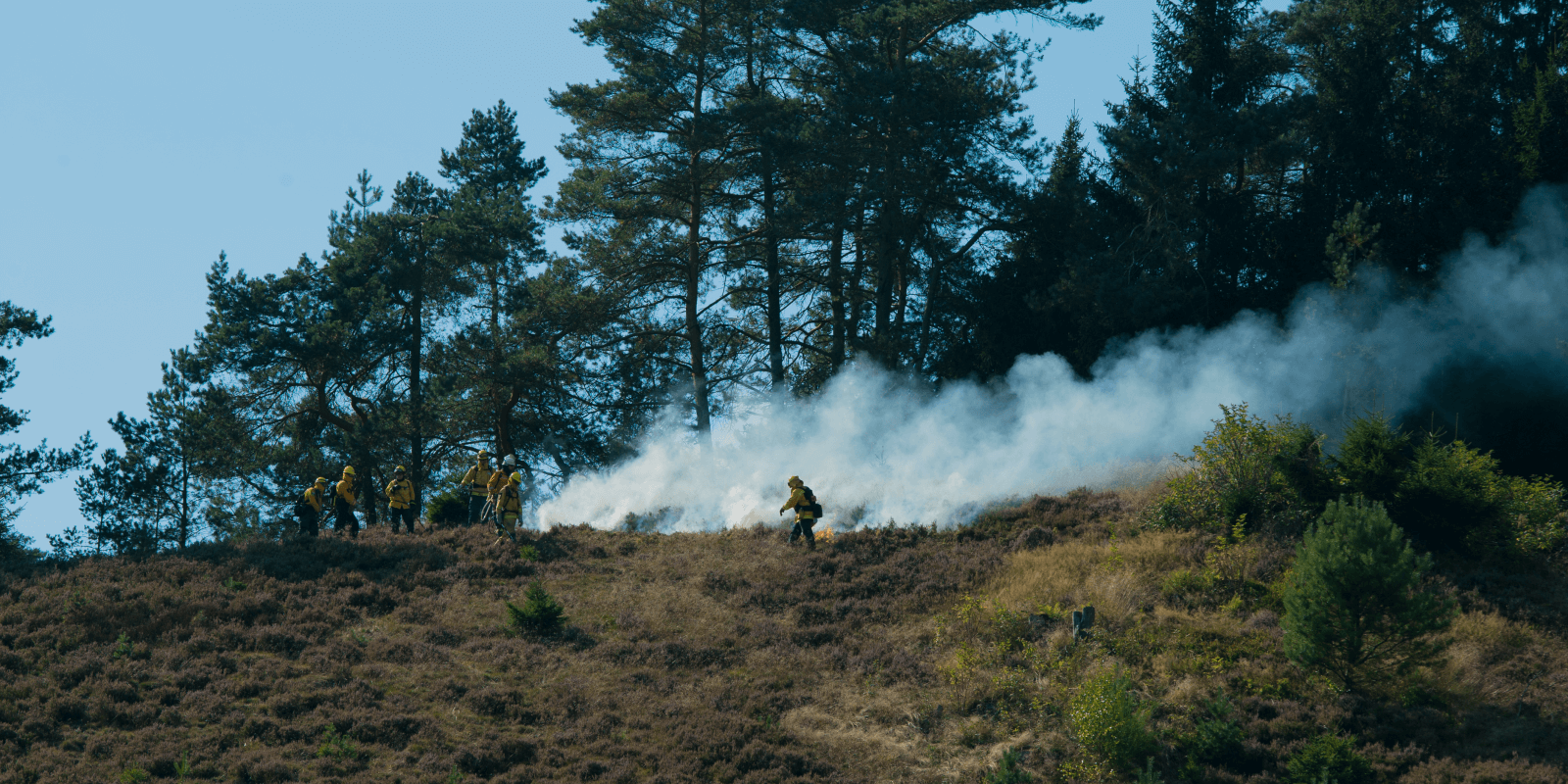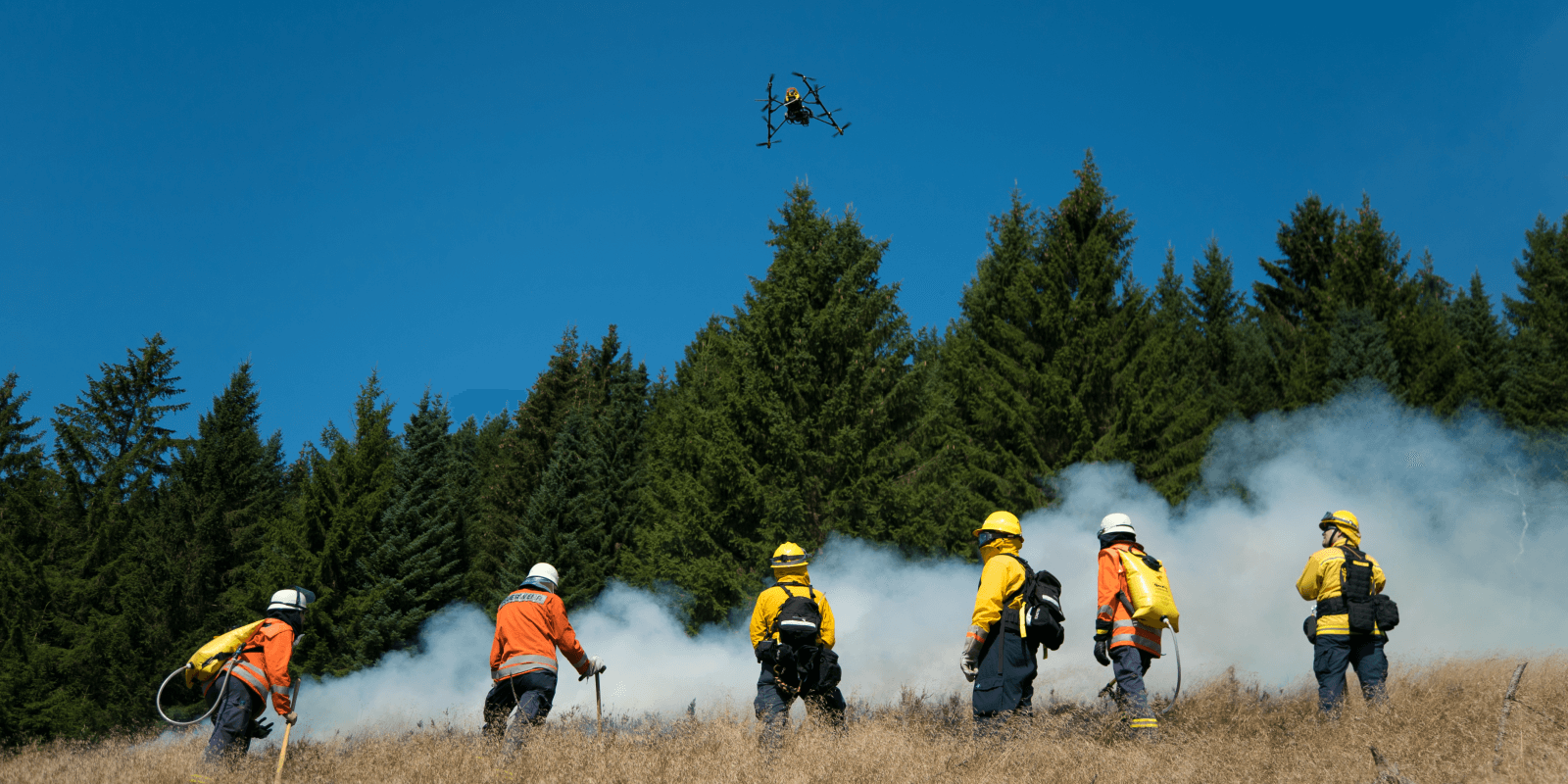Fire as a solution
Preserving the cultural landscape in Germany

In the heart of Germany, in the Harz area, a sneaky little bug is becoming a major threat. Surrounded by the soothing green hills of the Innerstetal, we meet the heroes of @fire, here to save the day.
@fire provides international assistance after great disasters, such as earthquakes and wildfires. “We are a non-profit organization which was founded in 2001 when other European countries had serious problems with forest fires. Things went wrong from Portugal to Greece. Fire brigades in Germany were unable to lend a hand, because a federal state is not equipped to provide help abroad. @fire now fills that gap,” says Hugo Tripp, one of @fire’s firefighters and member of its Board of Management.
“Our members are all volunteers,” he explains. “Mainly firefighters, but we also have forestry experts among us. Our goal is to provide assistance in forest fire emergencies worldwide – not only fighting the fire, but also searching and rescuing victims and providing medical care.”
And now for something completely different. Why are we here in Harz? Hugo Tripp: “We are here to save the cultural landscape in the Innerstetal, between Clausthal and Wildemann.”

“We use our firefighting techniques to burn these plains in a controlled manner."
A highly effective means
“Unfortunately, this heathland has been damaged severely by a certain beetle. It is necessary to intervene. The heather which has decayed and the grass which grows here both have to be removed. That way, the heather which is still intact can expand, the seeds in the ground can come back out, and this heathland can be preserved.”
Fire can be a problem – but it can also be a solution. This is where the flames come in.
“If you want to get rid of dead plants and grass, fire is a highly effective means," says mister Tripp. "Besides: other means can hardly be used here. You can’t use machines on hills as steep as they are here. Working with animals, sheep for instance, is also not an option because the soil here has been contaminated with heavy metals. It wouldn’t be good for the animals, and you couldn’t sell their meat anymore. We use our firefighting techniques to burn these plains in a controlled manner.”

“The drone’s infrared camera enables us to easily identify remaining hotspots after the fire.”
Extinguishing hotspots
After setting the heathland on fire, modern technology comes into play.
“We work with a GNSS receiver and a tablet to measure the plains we have burned and to document them,” says Tripp. “This makes it easy for us to exactly localize the plains later on, when we come back to see how the heather has recovered. With hills this steep, it is of great importance to get accurate height data. We can be sure of that thanks to this technology.”
And that’s not all. When the heath lies there smoldering, @fire’s firefighters are assisted by the Falcon 8, an Unmanned Aerial System (UAS) that is often used in hills and mountains. “The Falcon 8 helps us work smarter. It is equipped with an infrared camera that enables us to easily identify remaining hotspots after the fire, so we can make sure to extinguish them as well.”
“We work with a limited amount of water that we have to carry up the hills ourselves. If we can take care of these hotspots in a targeted manner, that saves us quite some work,” Hugo Tripp concludes.
Together with his fellow @fire volunteers, Tripp has made sure the beautiful heathland in the Harz area is still there to be enjoyed by the next generation. And as for the little culprits? Let's hope they beetled off in time.
